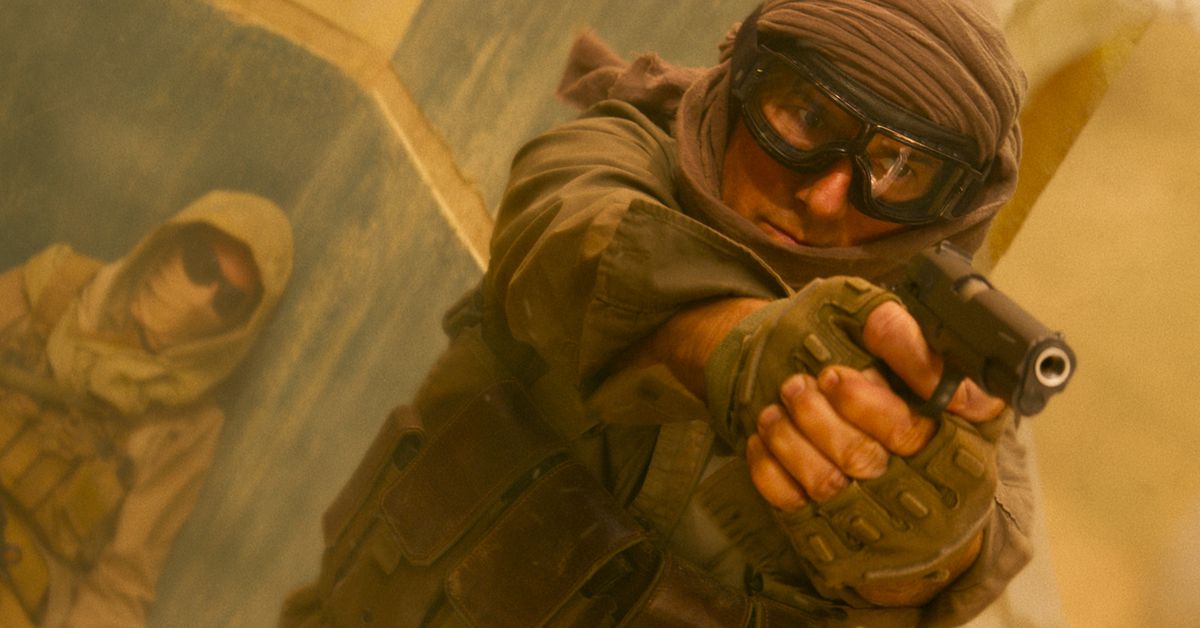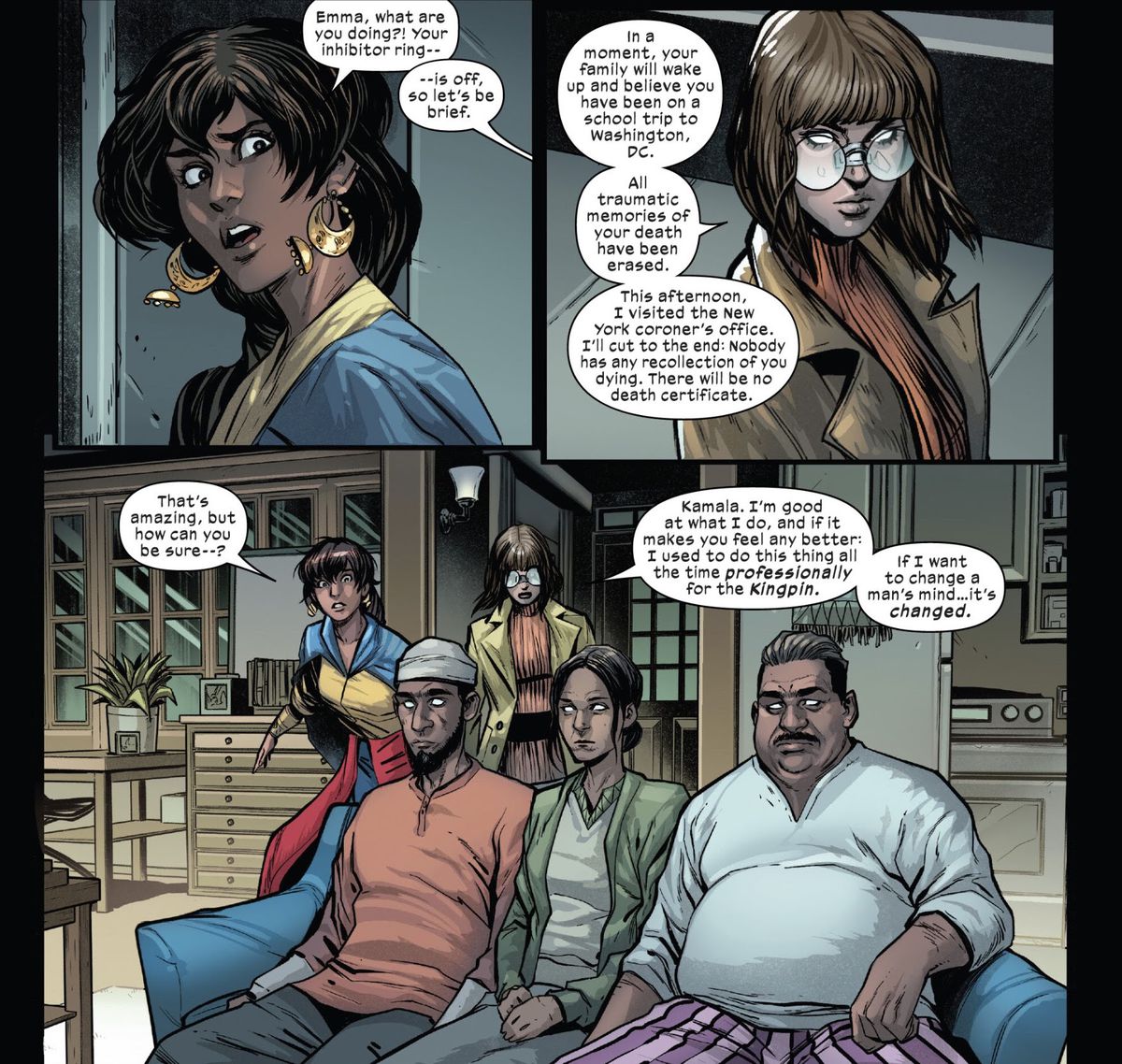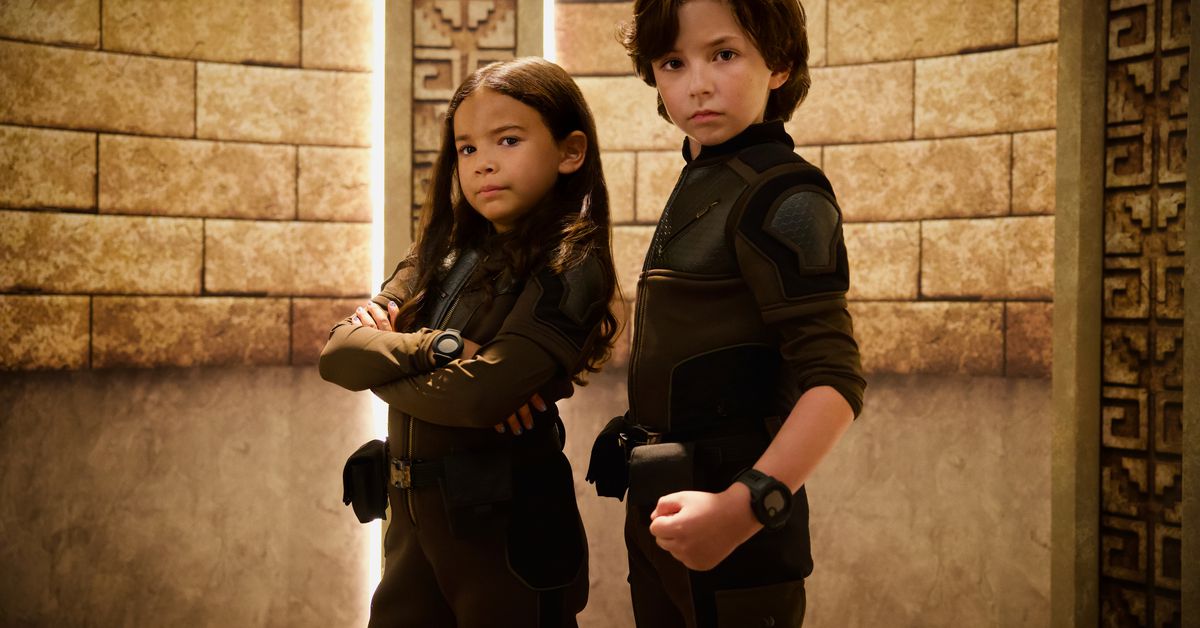On May 31, Robert Morgan’s queasy horror movie Stopmotion will start streaming on Shudder. But hardcore horror fans will have a chance to see the live-action/animation hybrid in theaters early, starting Feb. 23 — and they shouldn’t miss the chance. It’s best experienced in a theater because of the way its chilling visuals, twisty story, and especially gristly, grisly soundscape all set the tone.
Stopmotion follows a young stop-motion animator coping with the death of her domineering, celebrated animator mother, and dutifully trying to continue her work. But then she’s drawn into a disturbing new project that starts coming to life for her — maybe literally. Aisling Franciosi (star of The Nightingale, Jennifer Kent’s chilling follow-up to The Babadook, and a featured player on The Legend of Vox Machina and Game of Thrones) plays the animator, Ella, whose grief, defiance, and determination to make a name for herself all warp her in dark directions, which play out on screen via the animation she creates.
Director and co-writer Robert Morgan, a stop-motion animator known for his creepy shorts, including The Cat with Hands and Tomorrow I Will Be Dirt, makes his feature debut with Stopmotion, and he used his career in the field to give the movie a particularly tactile, detail-driven feel that balances out its gory horror elements. Polygon talked to him at the 2023 Fantastic Fest film festival in Austin, Texas, about where he put himself in this movie, how he managed all the animation himself, who he considers the pope of meat-puppet animation, and why stop-motion is a necromantic art.
This interview has been edited for concision and clarity.
Polygon: The title of this movie is ambiguous in an interesting way — there are a lot of different ways to potentially read “stop motion.” Were you focusing on those different layers?
Robert Morgan: Definitely. I spent a long time trying to think of the right title for it, and “Stopmotion” came up early on when we were writing it. I liked the directness of it, but I also like the fact that it has two or three other possible interpretations as well. There’s a contradiction in “stop” and “motion” — something that’s dead and alive at the same time. But also, you’re stopping motion. There’s a slightly ominous feeling about that, maybe to do with murder.
The line in the movie that hits hardest is about stop-motion animation being “the art of making dead things come to life.” Was that idea part of the genesis of this project?
It came about organically when we were writing it. I mean, the genesis was really to do with my own experience of making animation films, and having the sensation of them taking on a life of their own. When you get into a real creative groove on something, and it sort of starts speaking to you, it starts to tell you what it wants to be — that can be a really exciting experience, but you could imagine it as also a very scary experience. If there’s maybe an ominous objective — it always has its own consciousness, creativity. And maybe it doesn’t care what you want, or what’s good for you — it just wants its own thing.
So that was the genesis of it. But then all that other stuff about the medium of stop-motion slipped into the slipstream of the idea. Stop-motion is about bringing an inanimate object to life. There’s almost a black-arts quality to stop-motion, this idea of conjuring things, bringing things back to life. It’s like necromancy. It has this current of dark, strange things running underneath it.
:no_upscale()/cdn.vox-cdn.com/uploads/chorus_asset/file/25299648/STOPMOTION___Still_1__1_.jpg)
There are so many places in this movie where you see the puppets and they aren’t in motion — and they look incredibly creepy without the fluidity and personhood animation brings to them. As an animator, does that actually feel true to you on your own sets? Or is that just something for the audience to experience?
Probably the latter. I mean, I don’t find them creepy, I find them quite cute! But, yeah, when you’ve seen one of those puppets moving, and then you look at it again posed in the set, it carries within it the threat of movement. Like it could just come alive. There’s a scene in the film where Ella’s on the phone with her boyfriend and looks at her puppet and turns its head away. That was a little nod to that sensation, like, Is it looking at me? And you don’t quite know their intentions, either. You don’t know what they want.
How did you handle mixing a stop-motion character and a live actor in the same shot?
It’s a very, very complicated, very carefully storyboarded scene. We built that bedroom on the soundstage, and then we built a second bedroom with a raised floor, which matched it exactly. Then we shot the live-action plates with Aisling in the bed. And then we measured all the camera angles and lights and everything, and recreated the exact same angles in the stop-motion version. We needed to raise up the floor, because you can’t animate down on an actual floor. So we had a raised set with trapdoors in it so the animator could come out and animate it, and then that was all composited together.
In the Q&A I saw after this movie screened at Fantastic Fest, you said this movie was a little autobiographical, just in those terms of how your art takes on a life of its own. But what about the larger story, about living in the shadow of a great creator, trying to find your own identity? Is any of that personal to you?
No, that was a pure invention. What I can relate to is the feeling of desperately wanting to be creative, but not feeling you’ve got anything to say. That was certainly my experience. When I was younger, I wanted to be a filmmaker, I wanted to be an artist, but I didn’t know what my voice was. And that’s something I think a lot of artists can relate to.
It’s like, you have an overwhelming urge: I want to be part of that, I want to make art. And then you sit down and try and come up with something, but it feels like, I don’t know what I don’t know, or who I am, or what I’m saying. And you have to very gradually earn that, through life, and through consuming other art. Gradually, it happens. So that element, I relate to. But Ella’s mother was purely to accentuate it, to make that experience even worse for her. Because she’s not only living in the shadow of somebody else, she’s actually being almost used as a puppet herself, by her mother.
:no_upscale()/cdn.vox-cdn.com/uploads/chorus_asset/file/25299655/STOPMOTION___Still_4.jpg)
I noticed her mother keeps calling her “poppet” as an endearment, but most of the time it sounds like she’s saying “puppet.”
We deliberately did it sometimes as “poppet,” sometimes as “puppet.” We deliberately blurred the line there.
You’ve said the whole movie was made in 25 days.
So every time there’s animation and live-action together — all that was shot within 25 days, simultaneously to the live-action shoot. Then after the shoot, while we were editing, I set up a small studio in my lounge and shot all of the film-within-the-film stuff — all the Cyclops stuff, the mother’s film, and all of Ella’s film. I shot that myself with zero money, zero budget, in my lounge, while editing the film. So it was an intense post-production. It just kept on going. But the good thing about that is, because I’m not on a strict schedule anymore, I could do things a little bit looser, and tailor the animation to the edit as it was forming.
Can you speak to the the blue egg that starts the movie, and that we see as a recurring element? There’s a lot of symbolism in this movie, and I felt like I was tracking most of it, but the blue egg escapes me in terms of what you’re supposed to feel in response to it.
It’s mysterious. I can’t really talk about it. For me, it has something to do with death, and something to do with creativity. That’s all I can say about it. So watch the film again!
I think inevitably, people who know the history of stop-motion will think of Jan Švankmajer while watching this movie. Was he an influence?
If you’re going to make puppets out of meat, Švankmajer’s your guy. He made a film called Meat Love, which is just a little one-minute film, very simple, very short, with two steaks dancing and having sex before they get cooked.
I saw it as a student. I was like, I didn’t know you could do that. It’s so weird and funny and sick. So the idea of making puppets out of meat was very interesting. And he’s kind of like the pope of that type of animation. He really is a trailblazer in finding that macabre vein of stop-motion animation and really mining it.
There have been others. Before him there was Władysław Starewicz, an animator way back in the ’20s. He was making some quite strange, macabre films with stuffed animals and insects and things like that. And Charley Bowers, who was an American animator, used stuffed rats and cats and things like that, again in the 1920s. So there’s a tradition of macabre stop-motion — but Švankmajer stepped to the fore and exemplified it more than anybody else.
This is a very squelchy movie. Why so over the top with the sound? What did you want to achieve with it?
Just to create a sensual experience. For me, cinema is partly narrative, but it’s spectacle and sensual as well. So feeling the visceral quality of the film — the detail in the image grows with the detail of the sound. For me, 50% of the experience in a movie is the sound. So I wanted the sound to be as sensual and as detailed as the images were. It’s about creating a visual and sensual experience for the viewer.
Stopmotion is in theaters on Feb. 23 and will stream on Shudder starting May 31.






